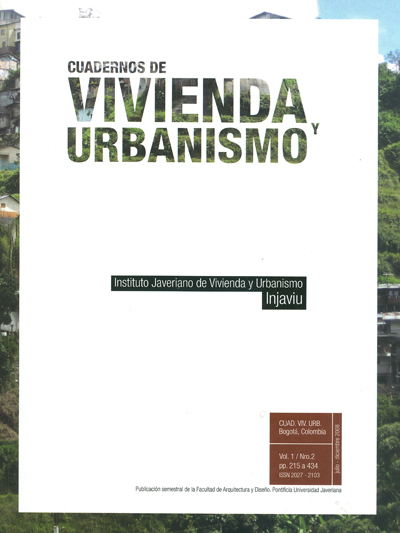Resumen
El espacio rural, próximo a las grandes ciudades colombianas, presenta un panorama crítico debido su situación de frontera entre un campo, que ha sido prácticamente abandonado como proyecto de desarrollo económico y social, en los últimos sesenta años, y una ciudad sometida a un proceso de urbanización intensivo, que en este corto período de tiempo cambió la demografía, la economía y la cultura del país. En líneas generales, este escenario rural crítico presenta las siguientes características:
›Urbanización incontrolada de vivienda VIS, espontánea, de recreo y segunda vivienda.
›Peri urbanización precaria, siguiendo patrón de hábitat urbano.
›Comunidades rurales empobrecidas, desarraigadas y trabajos de baja calificación.
›Deterioro progresivo de los ecosistemas estratégicos, la biodiversidad, las fuentes de agua y el paisaje agrario.
› Ruralidad homogeneizada.
› Política pública rural fragmentada y de bajo impacto.
› El Plan ECO –Estrategias Corregimentales– elaborado por la Escuela del Hábitat de la Universidad Nacional de Colombia sede de Medellín, propone una alternativa de manejo de estos territorios para lograr un desarrollo sostenible bajo la idea de construir una “nueva ruralidad”.
Esta revista científica se encuentra registrada bajo la licencia Creative Commons Reconocimiento 4.0 Internacional. Por lo tanto, esta obra se puede reproducir, distribuir y comunicar públicamente en formato digital, siempre que se reconozca el nombre de los autores y a la Pontificia Universidad Javeriana. Se permite citar, adaptar, transformar, autoarchivar, republicar y crear a partir del material, para cualquier finalidad (incluso comercial), siempre que se reconozca adecuadamente la autoría, se proporcione un enlace a la obra original y se indique si se han realizado cambios. La Pontificia Universidad Javeriana no retiene los derechos sobre las obras publicadas y los contenidos son responsabilidad exclusiva de los autores, quienes conservan sus derechos morales, intelectuales, de privacidad y publicidad.
El aval sobre la intervención de la obra (revisión, corrección de estilo, traducción, diagramación) y su posterior divulgación se otorga mediante una licencia de uso y no a través de una cesión de derechos, lo que representa que la revista y la Pontificia Universidad Javeriana se eximen de cualquier responsabilidad que se pueda derivar de una mala práctica ética por parte de los autores. En consecuencia de la protección brindada por la licencia de uso, la revista no se encuentra en la obligación de publicar retractaciones o modificar la información ya publicada, a no ser que la errata surja del proceso de gestión editorial. La publicación de contenidos en esta revista no representa regalías para los contribuyentes.


